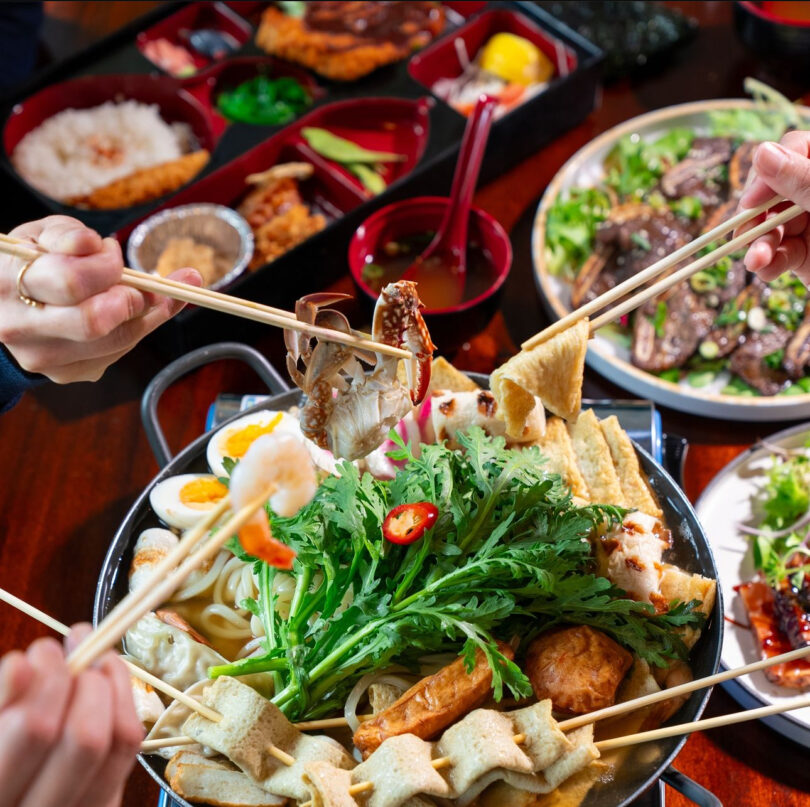Leading Sydney chef celebrates mid-Autumn Festival with cherished family tradition
When the full moon arrives in Australia this month, Korean chef Joanne Lee won’t just be in the kitchen preparing dishes steeped in family tradition at two of Sydney’s renowned dining destinations.
The Executive Group Chef for Wannian Alliance, who leads iconic Korean restaurants Arisun and Butchers Buffet, will be celebrating Chuseok, the Korean version of the Mid-Autumn Festival which is celebrated in many Asian countries.

Joanne Lee, Executive Head Chef of Wannian Alliance
For thousands of Australians of Asian descent, the full moon signals the beginning of Chuseok, also known as the Korean Harvest Festival, which is one of the most important and festive holidays of the year.
Traditionally Koreans return to their ancestral hometowns to celebrate with their families, but for Lee it will mean a return to her favourite childhood memories and dishes, including the popular songpyeon, rice cakes filled with sweet or savory fillings.
Steeped in tradition and meaning, songpyeon are also known as half-moon cakes and are only enjoyed once a year.
Lee, who migrated from Korea in 2005 and has more than 32 years of experience as a chef, has memories of making songpyeon as a child with her family as both fun and boring.

“It was one of the most fun times for the first two hours with my sisters and mother, but two hours later it started to get boring since it’s a labour-intensive process for children – making hundreds of songpyeon was not easy,” she said.
“But after this my family could enjoy delicious songpyeon for a couple of days as a sweet snack. Songpyeon is more than just a treat; it embodies the spirit of Chuseok by celebrating the harvest, promoting family togetherness, and honouring cultural traditions.”

Other traditional dishes such as japchae (stir-fried potato noodles) were rare to eat when Lee was a child, so when she could enjoy it during Chuseok it was “heaven”.
Lee will celebrate the festival by giving traditional foods such as rice cakes to friends, while also making traditional dishes to share.
It’s not just Chuseok when this family legacy and tradition shines through – black bean noodle is an iconic dish on Arisun’s menu.
“This dish embodies a rich tradition cherished since day one,” Lee said.

Image: Pork Belly Black Bean Noodle Dish
“Its enduring presence not only resonates deeply with us but also holds profound significance within Korean culture. Often associated with celebrations and milestones, this dish holds memories for many, symbolising warmth, connection, and the essence of home.
“As we journeyed from Korea to Australia, preserving this culinary heritage became paramount.”
For 33 years, since their humble beginnings in Belmore, black bean noodle has remained a beloved favourite, which Lee said served as a testament to their commitment to honouring their roots.”
Outside Arisun stands a symbolic statue as a tribute and a reminder that every moment there is a cause for celebration.
“With each serving, we hope to evoke nostalgia and transport our guests to a realm of personal reminiscence, that rekindles cherished memories and emotions unique to each person,” Ms Lee said.
Further background
Lee can outline why rice cakes are so important during Chuseok including:
- Symbol of abundance and prosperity: Songpyeon is made from glutinous rice, which symbolises abundance and prosperity. The process of making these rice cakes involves filling them with sweet or savory ingredients like sesame seeds, red beans, or chestnuts, representing the harvest’s bounty and the hope for a fruitful year ahead.
- Harvest celebration: A time to celebrate the fall harvest. Songpyeon, being a traditional food made from newly harvested rice, is a way to give thanks for the harvest and enjoy the fruits of labour.
- Family tradition and unity: Making songpyeon is often a family activity that brings people together. The process of preparing the dough, filling it, and shaping the cakes is a communal effort that strengthens family bonds and connects people with their cultural heritage.
- Symbolic meanings: Each shape and filling of the songpyeon can carry symbolic meanings. For instance, a half-moon shape is thought to represent the full moon, which is a symbol of harmony and completeness. The colours and fillings used can also signify various blessings and good fortune.







